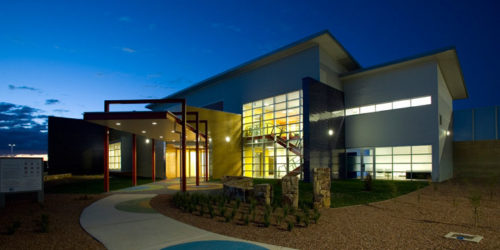
“The Alexander Maconochie Centre is, if not the worst performing prison in Australia, certainly among the worst,” writes political columnist JON STANHOPE.
THE Alexander Maconochie Centre (AMC) accepted its first detainees in 2009 – almost exactly 14 years ago.

The philosophy underpinning the decision to establish a prison in the ACT was that it would be human-rights compliant and that the central focus in its operation would be the rehabilitation of detainees.
Significantly, the ACT had by that time enacted a Human Rights Act, the first and, at the time, the only Australian jurisdiction to have done so.
The then government consistently emphasised that the central focus of the AMC would be the rehabilitation of detainees. The objectives were articulated at the time as being to reduce offending behaviour and encourage detainees to seek self-improvement and, hopefully, fulfil their potential and upon returning to the community from prison, lead successful and crime-free lives.
In 2012, the “Canberra Law Review” explained the AMC’s founding principles in the following terms: “The road to the ACT’s first prison was paved with rehabilitative intentions and despite the debates which considered arguments in favor of and against the building of a prison, what was consistent was the ACT’s commitment to the rehabilitation of offenders.
“The ACT is thereby revealed as exceptional as this ideological commitment to rehabilitation as a goal of imprisonment does not exist in other Australian jurisdictions.”
However, it is clear from a reading of the ACT auditor-general’s report titled “The Rehabilitation of Male Detainees at the Alexander Maconochie Centre”, which was delivered in April 2015, that by that date the earlier commitment by the ACT government to rehabilitation had been effectively abandoned.
Similarly, considering the recent spate of civil cases, initiated by detainees, in the ACT Supreme Court alleging breaches of the Human Rights and Corrections Management Acts the claims that the AMC is a human rights-based prison are also illusory.
The following excerpt from the auditor-general’s report provides a flavour of the nature and extent of the changes that have occurred.
“Boredom and inactivity in the correctional setting encourages drug use, undermines rehabilitation objectives and threatens security and safety. It is therefore important that the prisoner’s day be marked by the prisoner’s continuous engagement in purposeful activity.
“Over time, the prisoner will, through incentive-based regimes, exercise increasing levels of decision making, assume greater levels of responsibility and will be placed in accommodation which reflects this.
“The means to achieve the integration of the prisoners’ Rehabilitation Plans, ie case plan, will be a structured day of meaningful work, programs ( including visits) and recreation.”
It was envisaged that “the daily routine provides for approximately six hours of scheduled activities per day. Planning for a five-day week provides for 30 hours of scheduled activities per week. A typical daily routine is also set out for remanded detainees. Each routine identifies three program or activity slots per day.”
However, the auditor-general reported that, in reality, detainees were engaging, not as envisaged, in a total of six hours a day of structured activity, but rather in six hours a week or one hour a day.
The unsurprising consequence of this was pithily described, just recently, by the outgoing Inspector of Corrections Neil McAllister, in the following terms: “Frankly, the detainees (in the AMC) are bored shitless”.
Early planning also highlighted the centrality of education and other programs as well as the opportunity for detainees to engage in work. However, the most recent reports of the ACT Inspector of Corrections highlight that there are virtually no real jobs in the AMC and that for much of the last year the AMC did not have an education provider.
It was also revealed in the audit report that in its early years of operation AMC detainees were able to receive visitors on six days a week.
Again, the visits regime was deliberately designed to ensure that, to the greatest extent possible, detainees would maintain strong links with family and friends in recognition of the role that family and other community connections play in facilitating the successful return and reintegration of detainees into the community upon release from prison.
However, prison visits have regrettably been reduced to two days a week.
The consequences of the incremental abandonment by the ACT Labor and Greens parties of a genuine commitment to the AMC as a human-rights compliant and rehabilitation focused prison are revealed in the detail of each year’s Productivity Commission Reports on Government Services, the annual ABS reports on prisons in Australia and the reports of the Inspector of Corrections.
The bottom line in each of these series of reports is that the AMC is, if not the worst performing prison in Australia, certainly among the worst.
Interestingly a relatively new national organisation known as the Justice Reform Initiative (JRI) has been formed with the aim of reducing over-incarceration in Australia.
The JRI describes its focus as being to reduce Australia’s harmful and costly reliance on incarceration. In its words: “We seek to shift public discourse and policy away from building more prisons as the primary response of the criminal justice system and move instead to proven alternative, evidence-based approaches that break the cycle of incarceration.” Amen to that.
However, let’s not hold our breath considering the dismal record of the ACT Labor and Greens parties over the last decade/
During this time they have overseen a more than 250 per cent increase in Aboriginal incarceration – five times higher than the national average – resulting in Aboriginal peoples currently comprising 31 per cent of the AMC prisoner cohort despite constituting only 1.9 per cent of the ACT population.
Compounding the failings of the ACT government in this regard is, of course, the fact that the Aboriginal recidivism rate is well over 90 per cent.
Jon Stanhope was ACT chief minister at the time the AMC opened.
Who can be trusted?
In a world of spin and confusion, there’s never been a more important time to support independent journalism in Canberra.
If you trust our work online and want to enforce the power of independent voices, I invite you to make a small contribution.
Every dollar of support is invested back into our journalism to help keep citynews.com.au strong and free.
Thank you,
Ian Meikle, editor




Leave a Reply